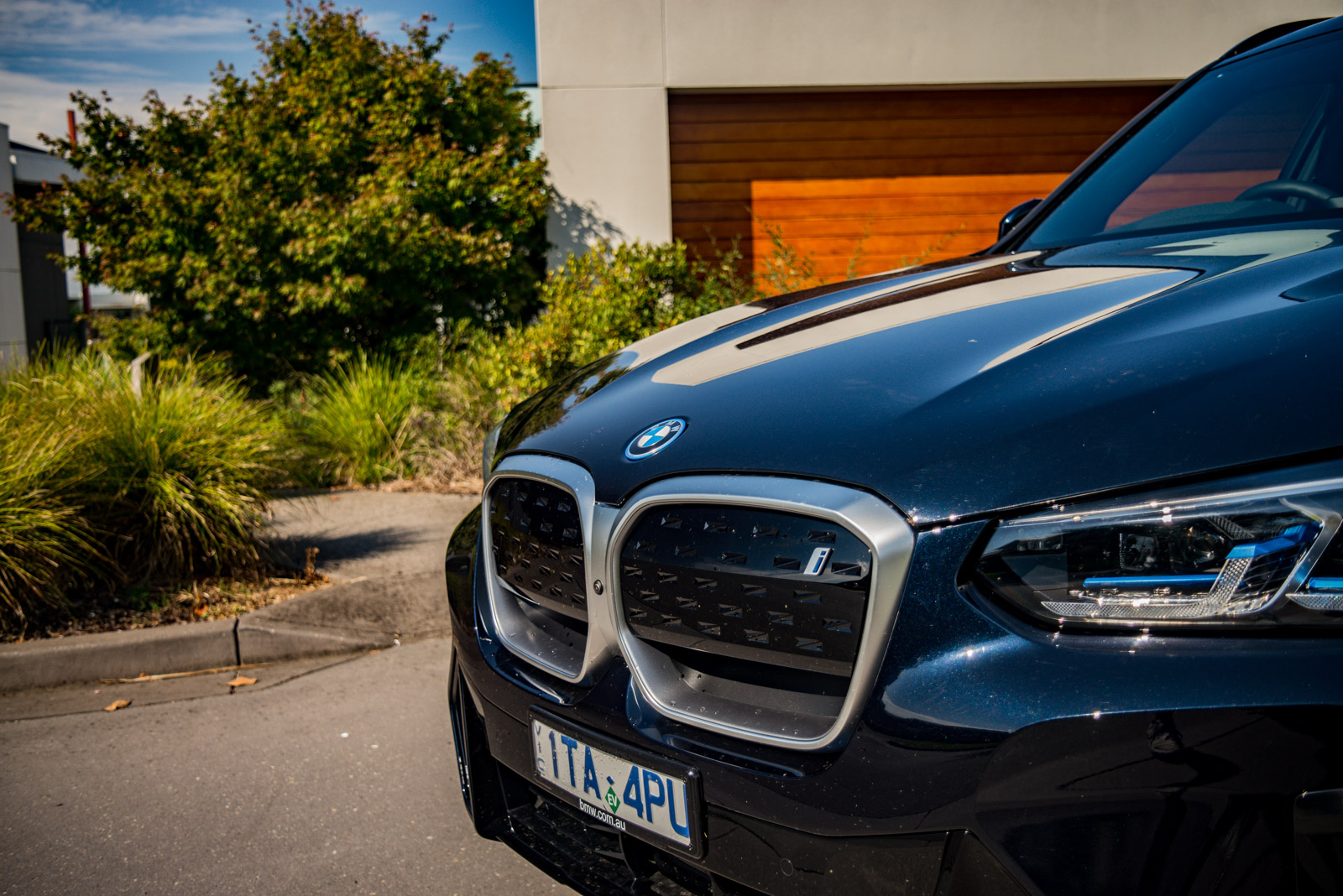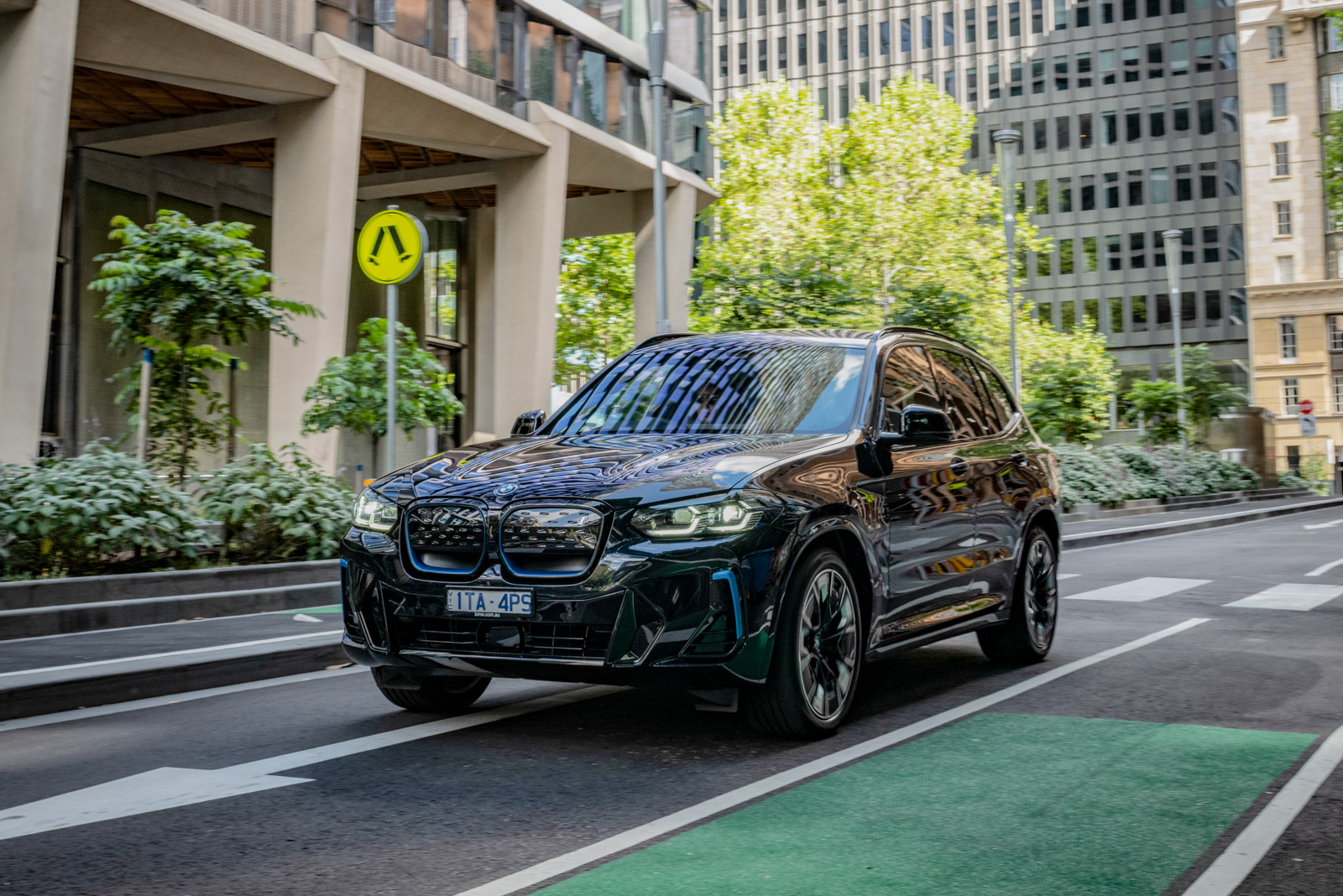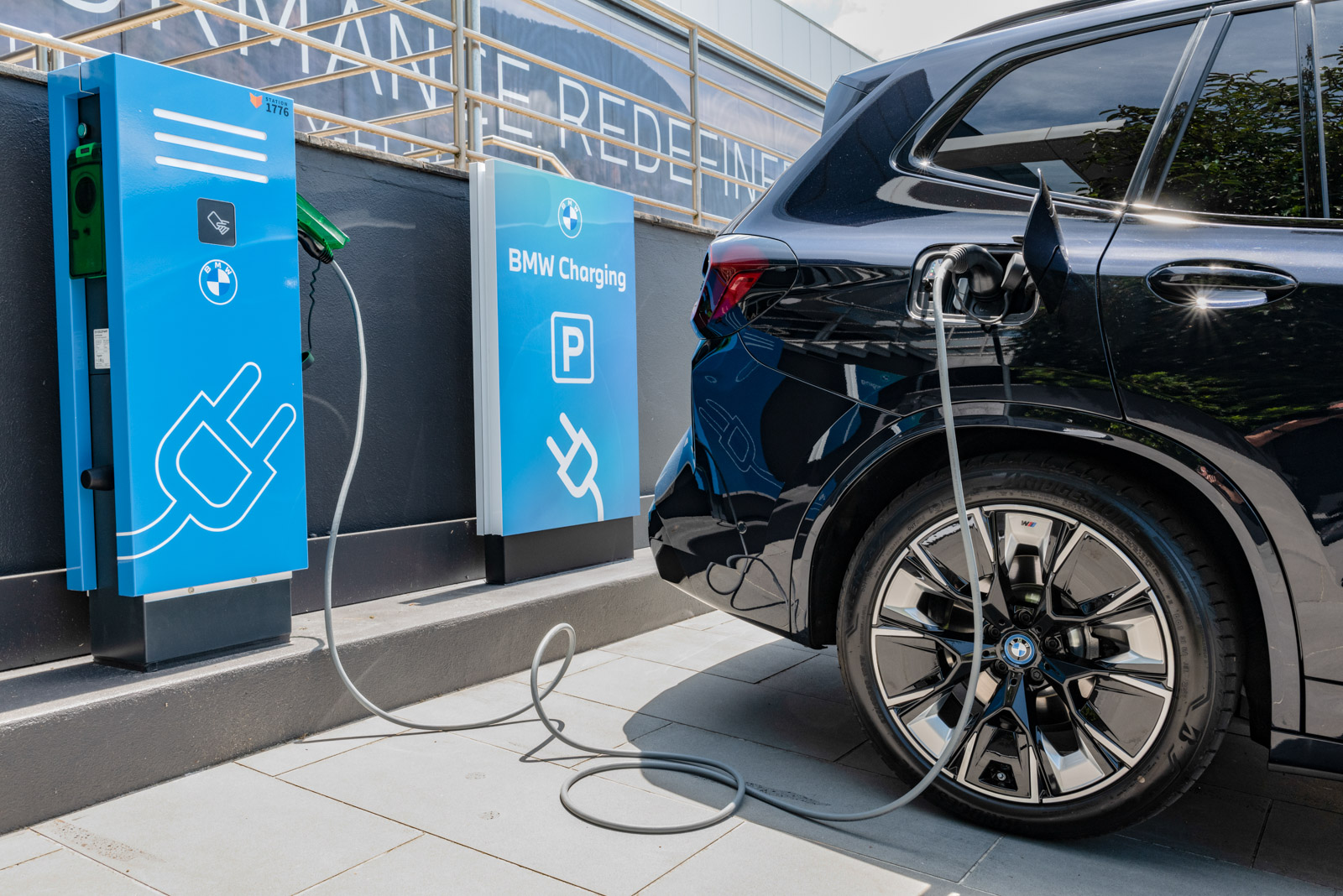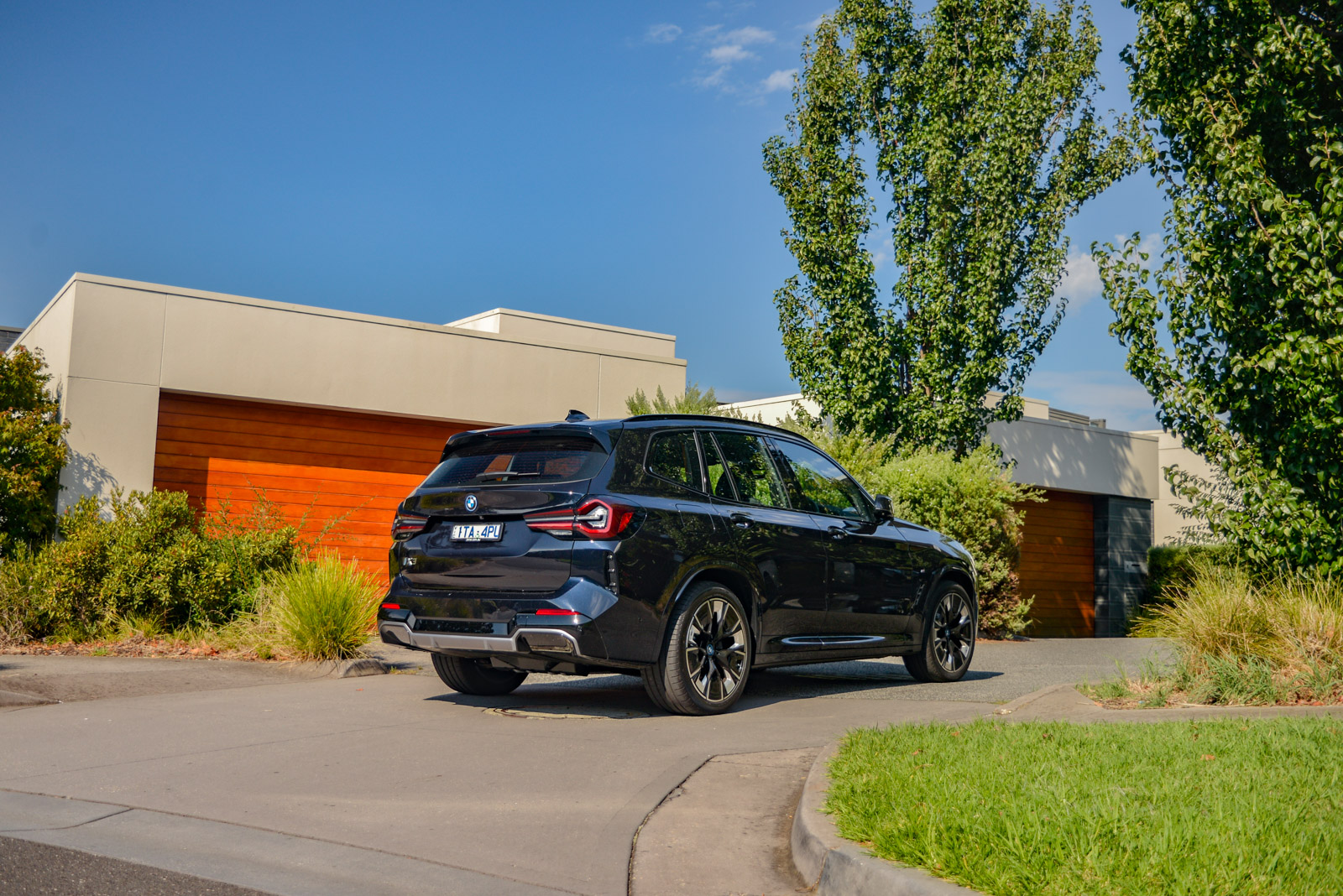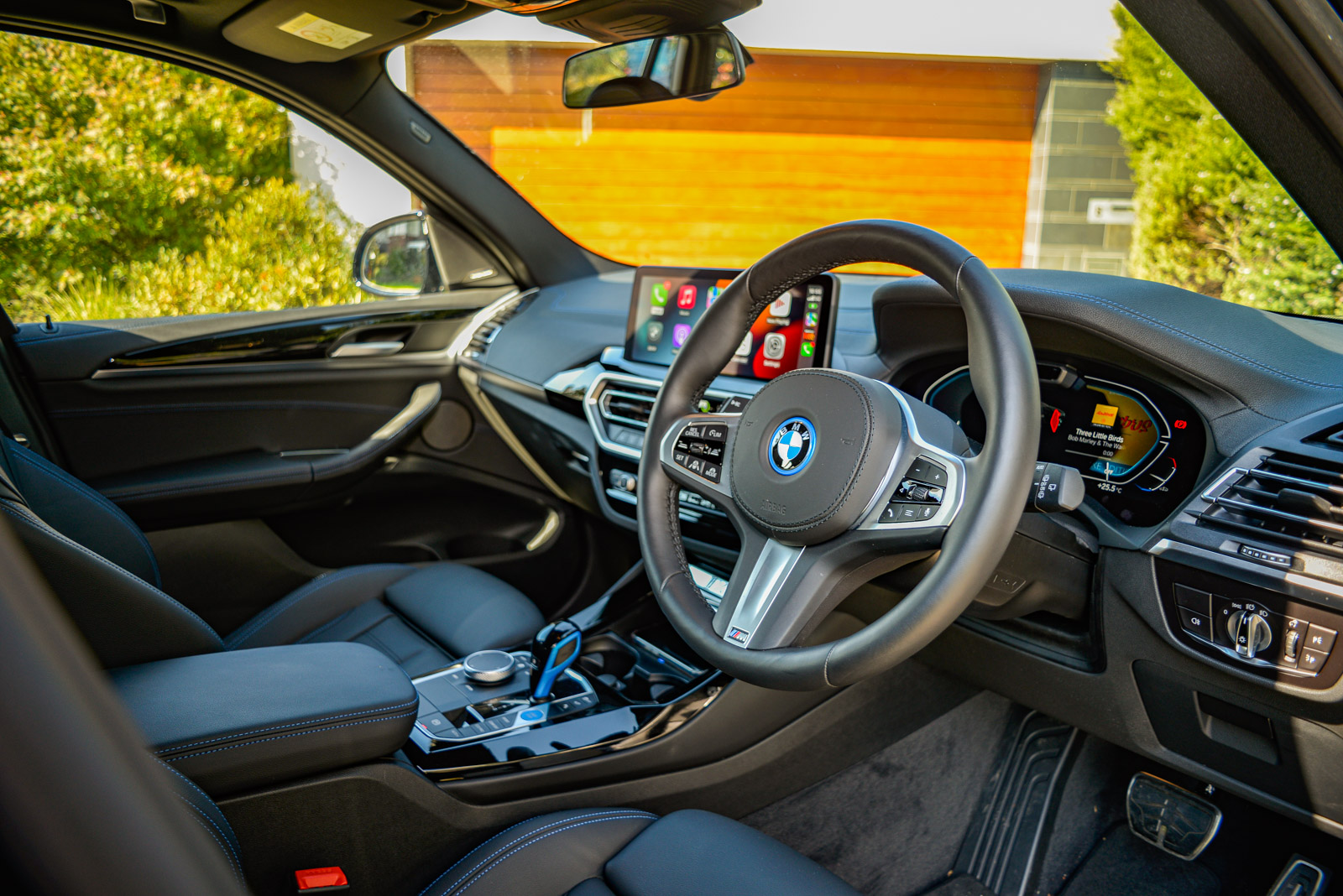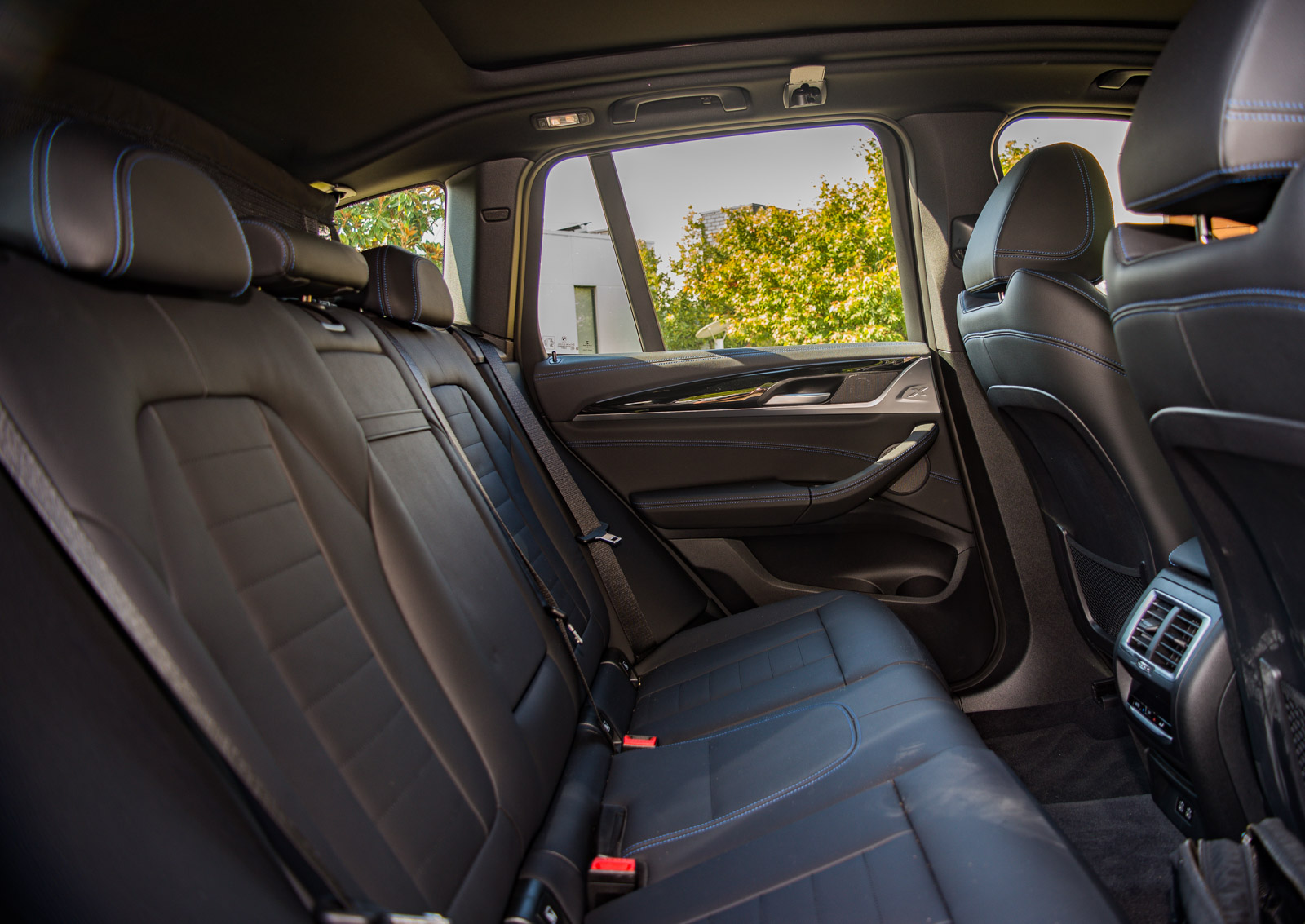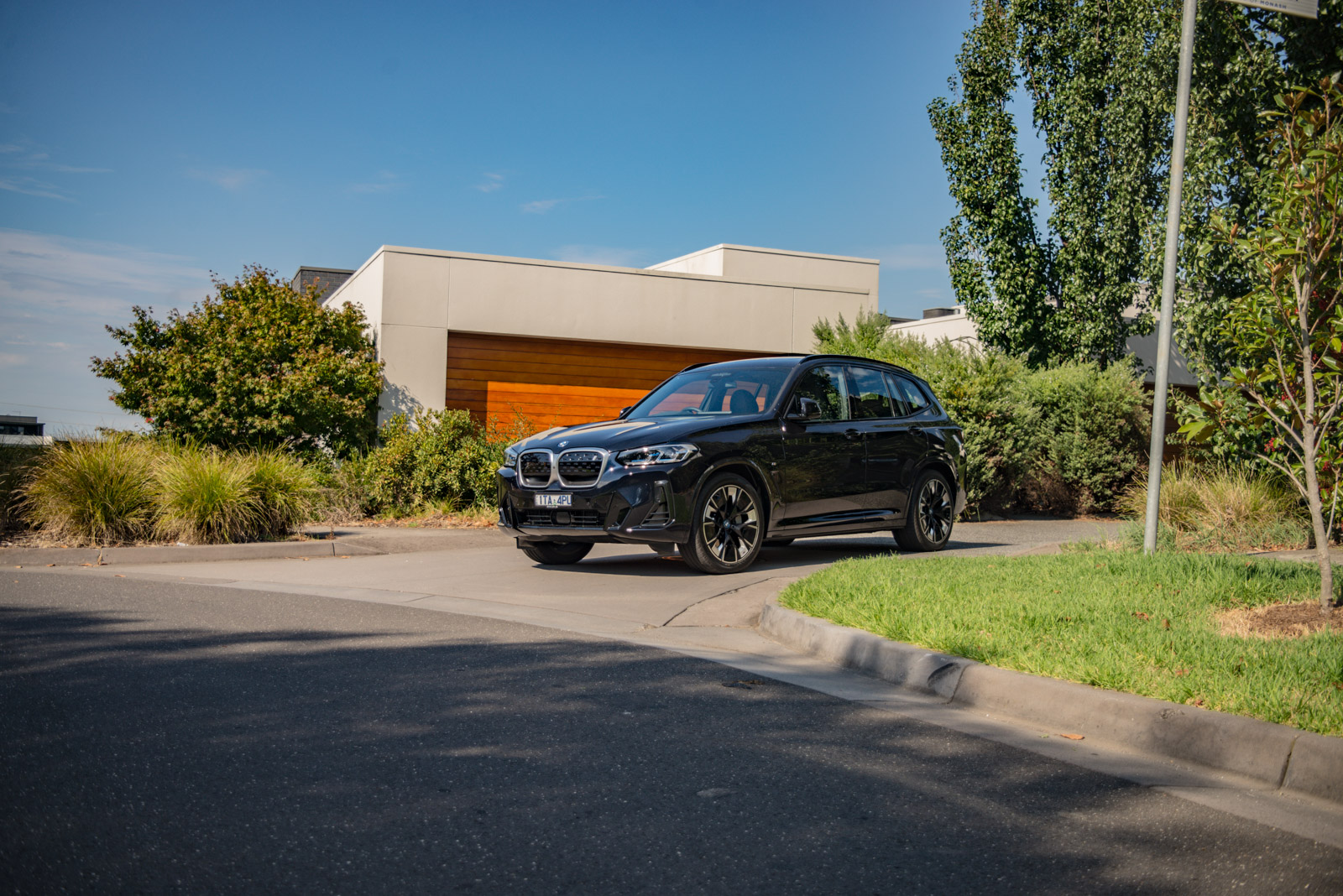It might not scream ‘EV’, but the BMW iX3 is a good electric SUV for those who care about quality and refinement.
While BMW’s early electric pioneers the i3 and i8 were designed to capture the imagination of customers with futuristic styling and novel powertrains, BMW has since divided its approach. Certainly, vehicles such as the new BMW iX continue with mould-breaking expectations, but the German brand has also adopted a more conservative approach. Case in point is this BMW iX3.
The BMW iX3 serves as an example of how the company thinks customer tastes have changed. Lots of buyers want their electric car to resemble something they’re used to – and that’s exactly what BMW has done here. The iX3 is an X3 with electric power, built on the same platform and with broadly similar looks – save for some aerodynamic wheels, an aerodynamic grille and subtle detailing. In a similar vein, the BMW i4 is effectively an electric version of the 4 Series Gran Coupe.
Regardless of whether it’s petrol, diesel, hybrid or electric, a BMW should always be good to drive – and that’s generally the case with the iX3. It feels like a slightly stiff setup underneath that’s presumably required to keep the car’s considerable 2185kg weight in check; the iX3 feels much like its internal-combustion siblings from behind the wheel, just with a firmer edge, although the adaptive dampers do well to maintain compliance over most bumps and edges.
The resulting ride composure, paired with relatively quick steering and a low centre of gravity, means the iX3 is perhaps a little more engaging than a Mercedes EQC or Audi e-tron. It’s quiet on the move, however, so should be a relaxing companion on longer drives.
A highlight of the iX3 driving experience – and one that’ll pay dividends around town where most are likely to be used – is its regenerative braking system. Like other systems, this lets you operate the car using just the accelerator pedal, lifting off to slow down at a preselected rate. It’s not as strong as the system in the BMW i3, but the more you use it, the more intuitive it becomes. Further to this, the iX3’s system can automatically figure out how much retardation to apply to maintain a suitable distance to the car in front. The sensation is of a cruise control system for braking; it works very well and is a great addition.
Most of the BMW iX3’s rivals have around 300kW of power, which sounds like a lot for a family SUV. In reality, it is – the BMW makes do with just 210kW and 400Nm, yet still feels really quick off the mark.
The 0-100km/h sprint takes 6.8 seconds, which should be plenty fast enough for most. The power delivery is instant, like in so many electric cars, so in everyday driving, it feels quicker than that figure suggests. But unlike its all-wheel-drive rivals, the iX3 is only rear-wheel drive. While this might put some people off, it shouldn’t; the electric X3 feels planted and secure. There’s perhaps a fraction less front end grip than you might find in a Mercedes-Benz EQC, but you’ll only notice this during hard cornering.
With a driving range of up to 460km, it beats the Mercedes-Benz EQC and Audi e-tron in official tests, and in our experience, the BMW is an efficient model in the real world.
When it comes to charging, the iX3 is fast, too, thanks to its 150kW maximum charging speed from public points. And if you have the facilities, it’ll accept three-phase charging at up to 11kW, allowing for speedy home top-ups, although many owners will use a 7kW home wallbox. On the fastest 150kW charging speed expect a 10-80 per cent top-up in just over half an hour, while an 11kW connection will recharge the battery in around 7.5 hours.
On a fully charged battery, our iX3 test car showed a range of just over 400km which felt realistic considering the use of air conditioning in hot weather. If you make the most of the car’s regenerative brakes and spend a lot of time in town (cruising slowly rather than at high speed), it could be better still.
More importantly, however, is the car’s efficiency. In our experience, the iX3 trumps its rivals in this regard; we managed a fairly impressive 19.1kWh/100km – even with some high speed running, several full-throttle launches and varied test-route driving. The official WLTP claim is 18.4kWh/100km.
If you’ve ever sat inside a normal BMW X3, then the electric version will feel very familiar. That means the rear seats are roomy, with the sense of space emphasised by the standard panoramic roof. You’ll easily get two child seats in the rear, or three adults at a push. There’s no sloping roofline like in a Jaguar I-Pace, which helps with accommodation.
The finish on the dash feels much like any other BMW X3 save for some blue-coloured trim – not a bad thing, but not especially exciting, either. Build quality is excellent and the infotainment system is among the best available anywhere, but some buyers may prefer the more fashion-forward Jaguar I-Pace or Audi e-tron. Those looking for a more minimalist approach will be better suited to a Tesla or Polestar product instead.
The iX3 comes with BMW Live Cockpit Professional, featuring Apple CarPlay and Android Auto. You can either use the touchscreen interface or the iDrive click wheel on the centre console, but either way the menus are easy to navigate and the graphics are crystal-clear.
Practicality isn’t quite as good as in a conventionally-powered X3, with the iX3’s boot space reduced by 40 litres to 510 litres. But there’s actually 60 litres more than you’ll find in the plug-in hybrid xDrive30e model, thanks to the clever position of the batteries.
Safety is a question mark when it comes to the iX3. Despite sharing a platform and various parts with the petrol and diesel X3s (which have five-star ANCAP ratings), its structure and packaging are different, so existing crash-test scores can’t be applied to this electric variant. However, with all the latest technology and driver aids, it’s likely the iX3 will be up there with the safest cars in this class. This includes Driving Assistant Professional package, which builds in a variety of semi-autonomous driving features like adaptive cruise control, traffic jam assistance, and an active lane keeping aid.
Overall, the BMW iX3 is a good all-rounder. Prices still start from $114,900 before on-road costs, which is a premium over most X3 models but if you can justify the price you’ll get a fully electric premium SUV with plenty of equipment, a decent real-world range, and a pleasant – engaging, even – driving experience.
| Model: | BMW iX3 |
| Price: | $114,900 before on-road costs |
| Batt./motor: | 74kWh/single electric rear motor |
| Power/torque: | 210kW/400Nm |
| Transmission: | Single-speed, rear-wheel drive |
| 0-100km/h: | 6.8 seconds |
| Top speed: | 180km/h |
| Electric Range: | 460km (WLTP claim) |
| On sale: | Now |





